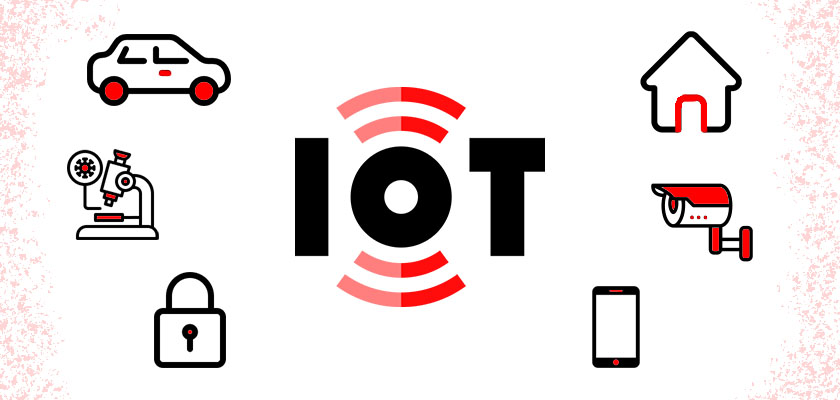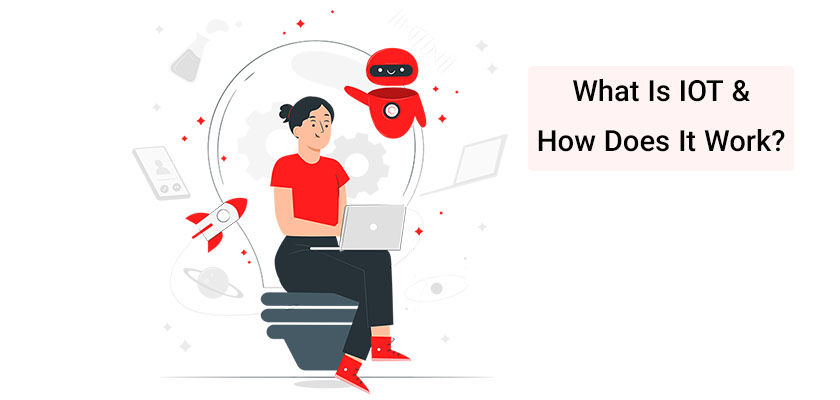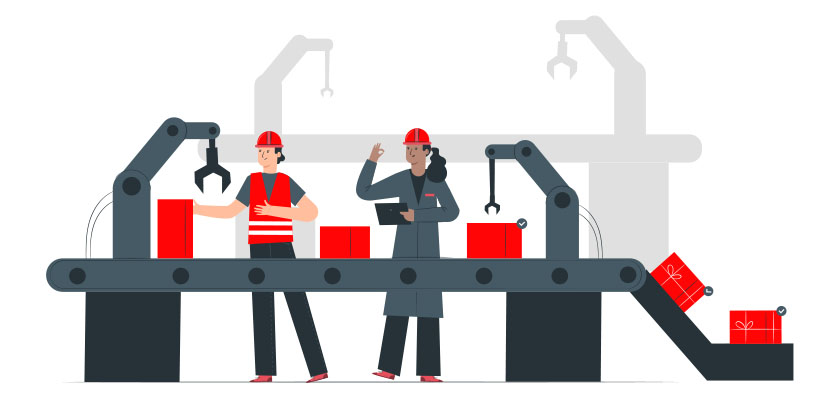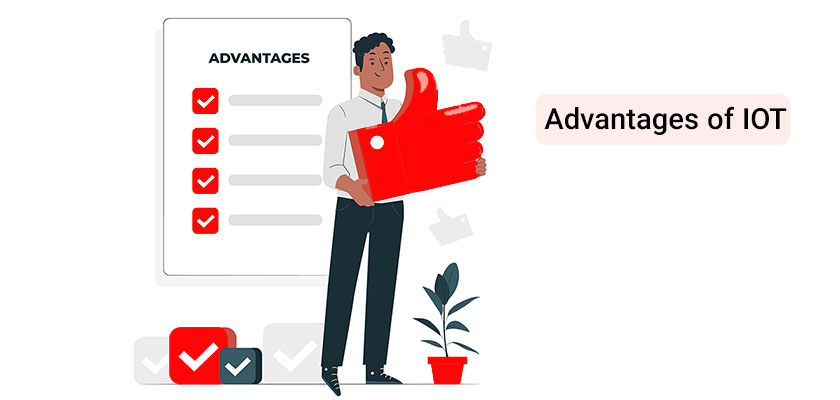
There’s a lot of discussion going on about the Internet of Things (or IoT) and the impact it has on everything, from how we travel and go about our shopping to how manufacturers track inventory. What is IoT technology? What is its purpose? Does it really matter? What is an IoT platform? In this article, we would like to discuss the Internet of Things and how it can be beneficial to our day-to-day lives. How to Manage our IoT devices with VPS server hosting services?
What Exactly Is the Internet of Things?
In simple terms, the Internet of Things is the idea that connects any gadget (so as it has an off/on switch) to the Internet and other devices that are connected. In essence, the IoT is a vast web of connected things and individuals – all of which gather and share information about how they’re utilized and the surroundings surrounding them and are connected to the IoT network.
IoT examples can be arrays of items that come in various shapes and sizes ranging including smart microwaves that automatically cook your food to the correct duration of time, self-driving vehicles which use sophisticated sensors to detect any objects that cross their path, and wearable fitness equipment that monitor your heart rate as well as the number of steps you’ve walked during the day. They then utilize that data to create workout plans that are tailored to you. There are wireless footballs that track the distance and speed at which they’re thrown and also keep track of those stats using an application for future training.
History of IoT
Kevin Ashton, the co-founder of the Auto-ID Center at the Massachusetts Institute of Technology (MIT), initially mentioned the “internet of things” during a presentation given for Procter & Gamble (P&G) in 1999. In an effort for radio frequency identification (RFID) into the spotlight of the company’s top management, Ashton called his presentation “Internet of Things” to reflect the exciting modern trend that was sweeping the nation in 1999 the Internet. MIT Professor Neil Gershenfeld’s book When Things Begin To Think was also published in 1999. It didn’t employ the exact phrase, but it did provide an enlightening view of the direction IoT was heading.
IoT has evolved from the convergence of wireless technologies, microelectromechanical systems (MEMSes), microservices, and the Internet. The convergence has allowed us to break the barriers of the operational technologies (OT) as well as information technology (IT) and allows unstructured data generated by machines to be examined for information that can be used to make improvements.
Although it was Ashton’s first reference to the Internet of all things concept that connected gadgets exist has been in use since the 1970s, with the terms the embedded web as well as pervasive computing.
The first device that was connected to the Internet, such as the Coke machine situated at Carnegie Mellon University in the early 1980s. With the Internet, a programmer could look up the condition of the machine and also determine whether there was an ice-cold drink waiting for them, should they choose to go to the machine.
IoT developed from M2M communications, i.e., machines connected to one another via the network, without any human interaction. M2M means connecting devices to the cloud, controlling it, and collecting information.
M2M took a new step; IoT is a sensor network made up of billions of devices that connect users as well as systems and other applications to gather and share information. M2M is the basis for IoT. M2M is the connector that allows IoT.
Internet of Things is an inevitable development of supervisory data acquisition and control (SCADA), an area of applications that use software to process, control, and gather data in real-time from remote locations in order to monitor equipment and the conditions. SCADA systems comprise the hardware as well as software. The hardware is used to gather and transmit data to a computer which includes SCADA software, from which it is processed and displayed in a timely fashion. The development of SCADA is that the late-generation SCADA systems have evolved into the first generation of IoT systems.
The idea of an IoT ecosystem was not fully on its own until around the mid-point of 2010, when in part, the government of China announced that it would consider IoT an important strategic goal in its five-year strategy.
How Does IoT Work?

IoT refers to any kind comprising physical devices that accept and transmit data via wireless networks with no human involvement. This is possible due to the integration of computing devices into every kind of object.
A smart thermostat (smart usually refers to the Internet of Things) can get information on your location from your car’s smart device while you commute. These devices connected to the Internet can regulate your home’s temperature prior to your arrival. This can be done without the need for your input and results in an outcome that is more pleasing than when you manually adjust the thermostat.
A typical IoT device, similar to the smart home mentioned above, works by constantly sending, receiving, and analyzing information in a feedback loop. It is dependent on the type that is used in IoT technology; the analysis may be carried out by humans or artificial intelligence (AI) and machine learning (AI/ML) in close-to-real-time or over a long time. Nowadays, there are tons of IoT projects being implemented.
Consider the smart home scenario. To help you determine the best time to set the thermostat prior to your arrival at home, the IoT system could be connected with Google Maps API for data on the current traffic patterns in your neighborhood. The system could also make use of the data that your connected car gathers to help you understand your commute habits. In addition, IoT data collected from all smart thermostat customers could be analyzed by utilities as part of vast-scale optimization initiatives.
Enterprise IoT
IoT often draws the attention of users, whose experiences with technology like smartwatches that are wearable are limited by the security and privacy issues that are associated with the constant connection. The perspective of the consumer is prevalent across all types of enterprise IoT initiatives, especially when the ultimate user is the public at large.
Enterprise IoT solutions can help companies enhance their existing business models as well as create new relationships with their partners and customers. However, they do not come without difficulties. The amount of data generated through a set of smart devices could be overwhelming (often called massive data). Integrating big data into systems and creating data analytics systems to use it will be a challenge.
IoT security is an important aspect to consider when designing IoT systems. Yet, for a lot of companies, IoT has been worth the effort and successful enterprise IoT usage cases are common in nearly every sector.
What Industries Could Benefit from IoT?

The best organizations for IoT would be those which could benefit from using sensors to improve their business operations using VPS server services.
Manufacturing
Manufacturers can get an advantage in competitiveness through monitoring production lines to allow proactive maintenance of equipment whenever sensors indicate the possibility of a malfunction. Sensors are able to detect the extent to which production output has been compromised. Through the use of sensors, companies can quickly test equipment for accuracy or take it off production until it’s repaired. This can help companies reduce operating expenses, improve uptime, and also improve the efficiency of their asset management.
Automotive
Automotive manufacturers stand to benefit greatly by utilizing IoT applications. Alongside the advantages of implementing IoT for production line monitoring, IoT sensors are able to detect imminent equipment failures in vehicles that are already in use and notify the driver of any issues and advice. Through the collection of aggregated data from IoT-related applications, automobile manufacturers and suppliers can find out more about the best ways to keep vehicles running and keep car owners updated.
Transportation and Logistics
Logistics and transportation systems can benefit from a myriad of IoT applications. Cars, trucks, as well as ships and trains which carry inventory can be moved according to the weather, vehicle availability, and driver availability due to IoT sensor information. The inventory itself could be outfitted with sensors that allow track-and-trace as well as temperature control monitoring. The food and beverage, flower, and pharmaceutical industries often carry temperature-sensitive inventory that would benefit greatly from IoT monitoring applications that send alerts when temperatures rise or fall to a level that threatens the product.
Retail
IoT apps allow retailers to control inventory, improve customer service, improve supply chain processes, and cut operational expenses. For instance, smart shelves with sensors for weight can gather RFID-based data and transmit the information to the IoT platform to check inventory levels and send out notifications when items are low. Beacons can send targeted advertisements and offers to customers, ensuring customers with an exciting experience.
Public Sector
The advantages that come from IoT for the government sector and in other services-related settings are also vast. For instance, utilities owned by the government are able to use IoT-based apps to inform their customers of massive outages or even minor interruptions to power, water or sewer services. IoT applications are able to collect information about the magnitude of the outage and then provide resources to aid utilities in recovering from outages at more speed.
Healthcare
IoT asset monitoring offers a variety of advantages to healthcare professionals. Nurses, doctors, and staff members often require where exactly to find the patient-assistance equipment like wheelchairs. When hospital wheelchairs have IoT sensors, the wheelchairs are able to be tracked using the IoT asset monitoring application to ensure that anyone who is looking for one will be able to quickly locate the closest wheelchair. A large number of assets in hospitals are tracked this way to ensure that they are used properly and also financial accounting of the physical assets of each department.
General Safety Across All Industries
Alongside the tracking of tangible assets, the IoT may be utilized to enhance worker security. Workers in dangerous environments like mines as well as fields for oil and gas, as well as power and chemical plants, for instance, have to be aware of any hazardous situation that could impact them. When they’re connected to IoT sensors and alerts, they will be informed of incidents or be saved from them as quickly as possible. IoT applications are also utilized for wearables to monitor human health as well as environmental conditions. These kinds of apps help people comprehend their health conditions and health, but they also allow physicians to monitor patients remotely.
What Are the Advantages of IoT for Businesses?

Enhance Innovation
The Internet of Things gives businesses access to sophisticated analytics that can uncover new opportunities. For instance, companies can design highly targeted advertising campaigns through the collection of data about the behavior of customers.
Data Can be Transformed into Actions and Insights using AI as well as ML
Data collected, as well as patterns from the past, are able to determine the future. For instance, information about warranties can be combined with IoT-collected information to anticipate maintenance issues. This is a great way to offer customer service in a proactive manner and increase customer loyalty.
Improve Security
Continuous monitoring of the digital and physical infrastructures can enhance efficiency, increase performance and decrease safety risks. For instance, the data collected from an onsite monitor may be coupled with firmware and hardware version information to automate system updates.
Scale Differentiated Solutions
IoT techniques can be used to improve customer service and improve customer satisfaction. For instance, products that are trending can be replenished quickly to prevent shortages.
How Can We Manage our IoT Devices?
A VPS server hosting service is the best platform which helps us to manage IoT devices. Since we need to manage our IoT devices immediately, a VPS is the best solution as the IoT device management. Read this article to see how a VPS Server helps us managing IoT devices.
How Can IoT Control the World?
IoT is revolutionizing the automotive by making connected cars communicate with each other. With IoT cars, owners are able to control their vehicles remotely, such as preheating the vehicle prior to when the driver enters it or remotely calling cars via phone. Because IoT can enable communication between devices and even cars will be able to book their own service appointments when they are needed. A VPS server can help to manage our car easily via a good connection.
The connected car enables dealers or car makers to flip the car ownership model upside down. Before, car makers maintained an arm’s length relationship with buyers on their own (or the opposite, none whatsoever). In essence, the relationship between the manufacturer and the vehicle ended when the car was shipped directly to the dealership. With connected vehicles, automobile dealers or manufacturers can maintain an ongoing relationship with their clients. Instead of selling cars, they can charge drivers usage fees, offering a “transportation-as-a-service” using autonomous cars. IoT allows car manufacturers to update their vehicles continuously by incorporating new software, which is a major shift from the conventional model of ownership of cars, where cars immediately decrease in value and performance.










Leave a Reply